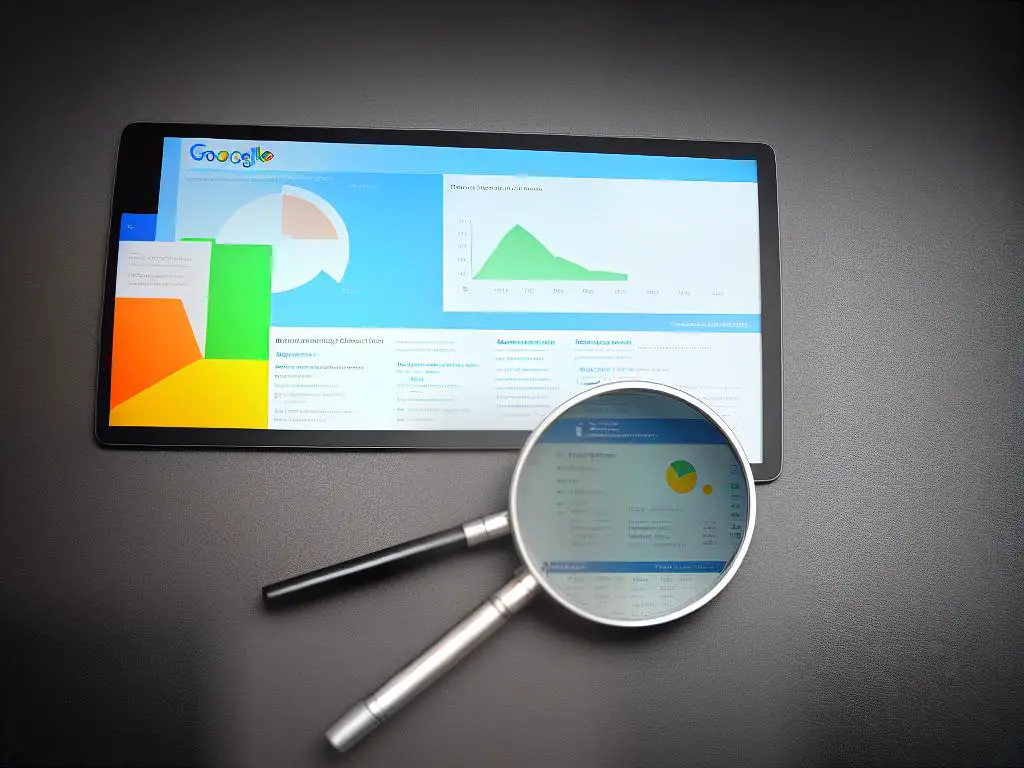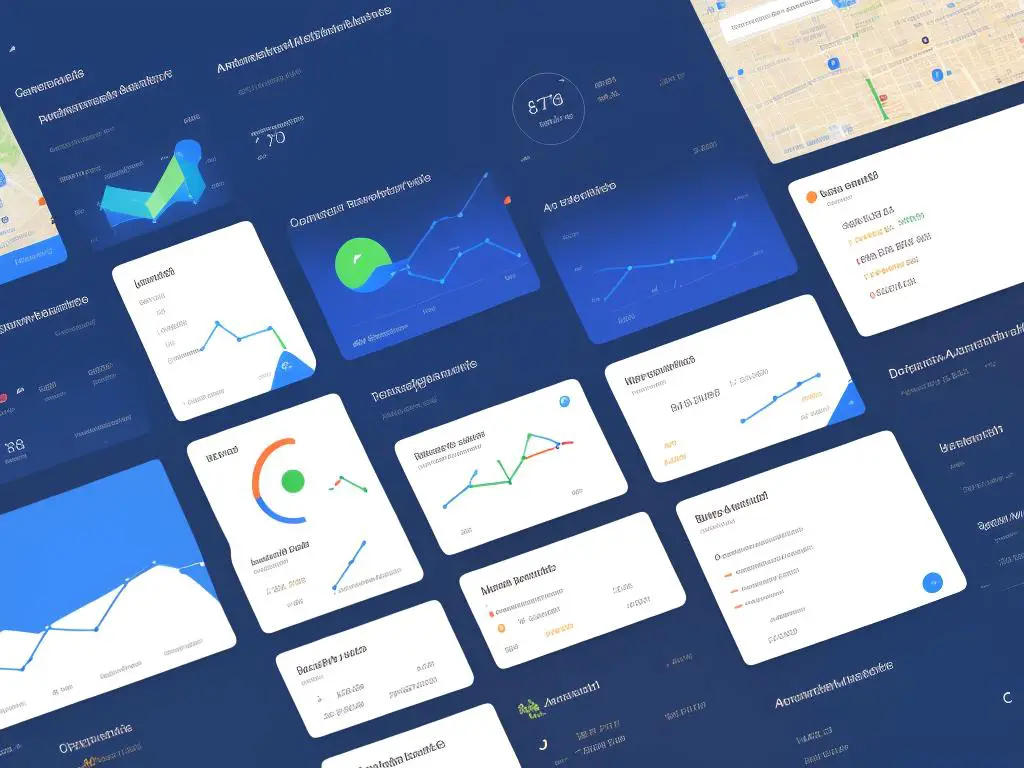In the progressing world of digital marketing, understanding your user base is more crucial than ever. Google Analytics 4 (GA4) User Properties promises a deeper, more insightful understanding of audience behaviors and crucial data for website owners and businesses. This comprehension is fundamental to the formulation of effective, targeted strategies. In response to this nouveau technology’s growing relevance, this piece aims to explain GA4 User Properties, highlighting discrepancies from previous Google Analytics versions and the impact these alterations pose. Furthermore, it underscores the importance of GA4 User Properties in data analysis, detailing its practical use in decision-making. Finally, it provides a step-by-step guide on setting up these properties and discusses the different types available, moving on to cover best practices for their effective utilization.
Overview of GA4 User Properties
Google Analytics 4
Google Analytics 4, also known as GA4, represents the next generation of Google Analytics. One of the significant changes in GA4, compared to previous versions, is the user properties feature. User properties in GA4 are specific characteristics or attributes that help to better define the nuances of user behaviors and thus enable more targeted analysis of your data.
What are GA4 User Properties
GA4 User Properties are complimentary to events and offer fine details about the users. For example, if an event is a purchase on your website, user properties can add context about the user, such as the user’s membership level or their geographic location. This granularity can help you better understand the behavior of different groups or types of users within your audience.
Key Features of GA4 User Properties
In GA4, User Properties can be utilized in a way that was not possible in previous versions of Google Analytics. GA4 allows you to create and use as many User Properties as you need. GA4 User Properties can be utilized for audience segmentation, which facilitates a more personalized approach to your analytics for different user groups. They can also be used in analysis and reports, manually created in your tracking code or automatically collected by GA4.
GA4 versus Previous Versions
Older versions of Google Analytics like UA (Universal Analytics) used sessions and page views as the fundamental units for data collection where users were implicitly defined by their behavior, mainly through goals or events. In contrast, GA4 employs a more flexible, event-based data model where User Properties become an integral part of the mix, leading to more comprehensive insights about user engagement.
The Impact of GA4 User Properties on Users
GA4’s shift to User Properties has profound implications for GA4 users. It angles towards a more user-centric approach to analytics rather than focusing merely on website interactions. This feature allows businesses to divide their audience into smaller, more targeted segments and tailor their service or products for each group. It also allows analysts to create more detailed and precise reports, thus forming a deeper understanding of their users’ behavior.
Conclusion
In comparison with its predecessors, GA4 User Properties present a significant advancement by offering an in-depth understanding of your audience. This move signifies a pivotal shift in the role of analytics, from just web usage tracking to a strategic instrument for audience growth. The User Properties feature, present in GA4, is an embodiment of Google’s futuristic vision of analytics, which gives businesses a holistic view of user interaction across various devices and platforms.

Importance of GA4 User Properties
The introduction of User Properties in Google Analytics 4 (GA4) has broadened the horizons for tracking and analyzing data. This feature enables storage and accessibility of user-level information, enhancing the overall capability of analyzing data in GA4. Insights about website or app users provided by User Properties aid in formulating strategic business decisions.
One of the main attributes of User Properties in GA4 is the ability to pinpoint different characteristics and behavioral patterns among users. This data is not merely confined to location or device type. Instead, it includes user actions on your website, such as sign-ups, checkouts, or any other custom events significant to your business. Such information allows for a more accurate and detailed audience profiling.
How GA4 User Properties Aid Marketing Efforts
The application of GA4 User Properties can provide a significant boost to your marketing efforts. By collecting detailed information about user behaviors, website owners can segment their audience based on various attributes. The ability to categorize users based on their specific characteristics or actions taken gives marketers the liberty to create personalized marketing campaigns. These custom-made ads are likely to resonate more with the target audience, thus leading to higher engagement and conversion rates.
Improving Product Offering with GA4 User Properties
GA4 User Properties help in refining your product offering. By examining user behavior data, you can identify features that are popular with your users, those that aren’t used as often or ones that could use improvement. Understanding these nuances helps align your development initiatives with user preference, thereby enhancing the overall user experience.
Ensuring Better User Experience
GA4 User Properties can be employed effectively to enhance user experience. With user properties, you are no longer generalizing the user experience. You can create tailored experiences for different users based on their actions and preferences. If a user frequently visits a certain section of your site, you can highlight similar sections or services to them. Personalizing their experience not only boosts engagement but can also lead to an increase in user retention.
GA4 User Properties is a powerful tool integrated into the modern-data-driven business landscape. These properties grant businesses a sophisticated and detailed insight into user behaviors, lending them the capability to make data-driven decisions. By attributing data to individual users, businesses can better understand their audience, allowing the adaptation of their offerings, refinement of marketing strategies, and ultimately enriching user experiences. Therefore, when leveraged correctly, GA4 User Properties can substantially aid in business growth.

Setting Up GA4 User Properties
Understanding GA4 User Properties
Google Analytics 4 (GA4) user properties offer a valuable resource in gaining a deeper understanding of users’ interaction with your website or app. Setting up these properties enables tracking of intricate, user-level data, ranging from demographic profiles to viewing habits or specific user interactivity. So, let’s take a structured approach in understanding how to effectively set up and utilize GA4 user properties to maximize its benefits.
What are GA4 User Properties?
Before we begin setting up these properties, it’s crucial to understand what exactly GA4 user properties are. They are basically user-level characteristics or attributes that you can set to record and track. These could be details like age, gender, product preferences, geographic location, device type, and more. You can also create custom user properties that best suit the needs of your business or project.
Accessing User Properties in GA4
To access the user properties in GA4, you need to navigate to your Google Analytics account and select the property you wish to manage. Inside the property, click on ‘All Events’ from the ‘Events’ section. You will find the ‘User properties’ tab where you can manage and set up your desired user properties.
Creating GA4 User Properties
Creating user properties in GA4 includes two primary steps: defining the user property and then assigning the user property.
First, you need to define the user property by clicking on ‘Create new user property’. Here, you will be prompted to provide a name for your property and you can set the type of data to be captured – either string, boolean, or integer.
Assigning the User Property
The next step is assigning the user property. This involves deploying the user-defined property to your code. You need to update your tracking code to include the new property. The exact process will vary depending on your coding language, so consulting the Google Analytics Developers Guide would be beneficial.
Once finished, the user property will start tracking specified data from the users interacting with your website or application.
Creating Custom User Properties
Apart from the predefined user properties provided by Google Analytics, you also have the flexibility to create custom user properties that specifically suit your project or business’s needs. This process is similar to creating normal user properties. You still need to define the property with a unique name and value in the ‘Create new user property’ section. However, take care to correctly define the value as it’s recorded exactly as you configure, unlike predefined user properties.
Wrapping Up
To wrap up, User Properties in GA4 are an efficient instrument for delving into the intricacies of user behavior and user-level data. They afford you the flexibility to customize in order for better control and understanding of your data. Implementing these properties and custom properties may come across as an intricate task at the outset, but once comprehended, they pave the way to a superior comprehension of user interactions on your app or website. Therefore, it offers a profound depth in data-driven decision-making for your business projects.

Photo by markusspiske on Unsplash
Understanding Different types of GA4 User Properties
Understanding User Properties in Google Analytics 4
Google Analytics 4, also referred to as GA4, employs User Properties to monitor a range of data points related to users. These user properties are values associated with particular attributes that shape the user experience and are vital for businesses to glean insights regarding user engagement and experience. In GA4, three main types of User Properties exist: Built-In Properties, Custom Properties, and Registered Properties. These distinctive categories aid in efficient user data collection and meticulous data analysis, paving the way for well-informed decision making.
Understanding Built-In User Properties
Built-In Properties are the predefined properties in GA4 that automatically track certain actions of users without the need for any additional coding or configuration. These properties can include information such as location, device type, platform, and much more. They form the base level user tracking, providing the essential data required for a basic understanding of user activity.
The data captured using built-in properties are often displayed in the default reports generated by Google Analytics. This information can help to identify user trends, user behavior, and areas of interest. This makes built-in user properties a fundamental part of GA4’s data collection and analysis.
Exploring Custom User Properties
Custom User Properties provide a more detailed level of data tracking. They allow businesses to define and track specific data points that may not be part of the standard built-in properties. For instance, a business can create a custom property to track the ‘Preferred Payment Method’ of users – which GA4 does not automatically track.
Custom User Properties empower businesses to focus on specific areas of interest, providing them more relevance and context to their data. This flexibility in tracking user-defined data crowns custom properties as a pivotal tool for businesses looking to dig deeper into their user analysis.
Registered User Properties: A Blend of Built-In and Custom
Registered User Properties are a blend of Built-In and Custom Properties that are marked for use in the audience segmentation and conditional configurations of certain features of GA4.
This means, while registered properties could either be built-in or custom, they are specifically highlighted for use in certain configurations that involve segmenting or categorizing users based on specific conditions. For instance, they can be used to create audiences for remarketing, or for setting up specific conversion events.
A Practical Understanding
A comprehension of GA4 User Properties, inclusive of built-in, custom, or registered, plays a critical role in harnessing the immense potential of Google Analytics. These properties are pivotal in gathering significant user data, and they pave the way for concentrated data analysis that feeds into the process of making informed decisions.
In essence, GA4 User Properties allow for an intricate view of your audience and deliver valuable insights into their behavior. Such knowledge is instrumental in strengthening user engagement, improving user retention, and propelling overall business growth.

Best Practices for Using GA4 User Properties
Delving into Google Analytics 4 (GA4)
The strength of GA4 lies in its ability to aid website proprietors, marketers, and data analysts in achieving their business aspirations. A standout feature of GA4 is its user properties, which are effectively attributes or characteristics that delineate your website users. These attributes could also capture distinct user behaviors, making them a crucial aspect of your data tracking initiatives.
Understanding GA4 User Properties
The GA4 user properties are variables that categorize and classify your site users. They can include a wide array of metrics and attributes such as location, language preference, device type, session duration, engagement level, actions taken on the website, and more. Apart from the built-in user properties, GA4 allows customization, giving you the liberty to create your unique user properties that align with your specific requirements.
The Importance of GA4 User Properties
Given their capacity to provide granular insights about your users, the GA4 user properties are pivotal for targeted decision-making. They are essential for segmenting your audience, understanding user behavior, planning marketing tactics, enhancing user experience, and increasing conversion rates. Accurately identifying and leveraging these properties can significantly optimize your marketing strategies and impacts.
Best Practices for Using GA4 User Properties
It’s critical to follow some best practices for using GA4 user properties to ensure you are gaining the most out of this tool.
- Firstly, it’s essential to define your user properties carefully. Make sure they accurately depict the characteristics of your audience and align with your business objectives.
- Secondly, keep monitoring and revisiting your user properties as user behavior changes over time. Keep them updated to ensure they are still relevant and significant.
- When creating customized properties, follow naming conventions for consistency, and to make sure that your properties are recognizable and easily interpreted by your team.
Analyzing GA4 User Properties
Considering the rich information that user properties provide, it’s crucial to utilize them for in-depth analysis. Pairing user properties with different events can give you valuable insights into user behavior. By doing so, you can identify the prevalent patterns and trends in users’ actions on your website. Such insights aid in forming strategies to improve user engagement and conversion rates.
Compliance and Privacy
While exploiting GA4 user properties for your advantage, it’s also essential to respect user privacy. Ensure any data you collect complies with all relevant regulations, such as GDPR, CCPA, etc. Making a privacy policy and being transparent about what user property data you are collecting and why can also enhance trust between you and your users.
In conclusion
GA4 user properties play a significant role in website optimization, audience targeting, and policy compliance. When used effectively, they offer rich, valuable insights that can propel your marketing efforts in the right direction. Above all, it’s crucial to maintain a balance between exploiting these properties for your business advantage and respecting user privacy. By adhering to these best practices, you can maximize the benefits of the GA4 user properties.

GA4 User Properties present an innovative and comprehensive way to gain detailed insights into audience behaviors. By understanding the importance and setup process of these properties, users can leverage their full potential in website optimization and audience targeting. Moreover, the knowledge of various user properties types enhances the customization and thus, the effectiveness of data analysis. When used strategically, these properties advance businesses and website owners in the competitive digital world by promoting data-driven decision making and improving policy compliance. Therefore, understanding and utilizing GA4 User Properties inevitably foster a more impactful online presence.

